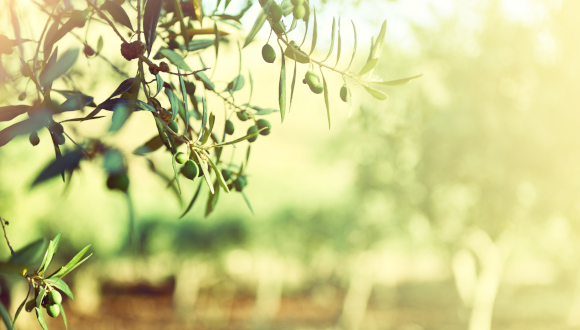TAU research finds earliest evidence for deliberate cultivation of a fruit tree

Olive trees first domesticated 7,000 years ago, researchers say
Support this researchA joint study by researchers from Tel Aviv University (TAU) and the Hebrew University has unraveled the earliest evidence for domestication of a fruit tree. The researchers analyzed remnants of charcoal from the Chalcolithic site of Tel Zaf in the Jordan Valley and determined that they came from olive trees. Since the olive did not grow naturally in the Jordan Valley, the inhabitants planted the tree deliberately about 7,000 years ago.
The groundbreaking study was led by Dr. Dafna Langgut of TAU’s Jacob M. Alkow Department of Archaeology & Ancient Near Eastern Cultures and the Steinhardt Museum of Natural History. The charcoal remnants were found in an excavation directed by Professor Yosef Garfinkel of the Institute of Archaeology at the Hebrew University. The findings were published in Scientific Reports on May 6, 2022.
“Trees, even when burned down to charcoal, can be identified by their anatomic structure,” Dr. Langgut explains. “Wood was the ‘plastic’ of the ancient world. It was used for construction, for making tools and furniture, and as a source of energy. That’s why identifying tree remnants found at archaeological sites, such as charcoal from hearths, is a key to understanding what kinds of trees grew in the natural environment at the time, and when humans began to cultivate fruit trees.”
In her lab, Dr. Langgut identified the charcoal from Tel Zaf as belonging to olive and fig trees. “Olive trees grow in the wild in the land of Israel, but they do not grow in the Jordan Valley,” she says. “This means that someone brought them there intentionally — they took the knowledge and the plant itself to a place that is outside its natural habitat. In archaeobotany, this is considered indisputable proof of domestication, which means that we have here the earliest evidence of the olive’s domestication anywhere in the world.”
“Tel Zaf was a large prehistoric village in the middle Jordan Valley south of Beit She’an, inhabited between 7,200 and 6,700 years ago,” Professor Garfinkel says. “Large houses with courtyards were discovered at the site, each with several granaries for storing crops. Storage capacities were up to 20 times greater than any single family’s calorie consumption, so clearly these were caches for storing great wealth. The wealth of the village was manifested in the production of elaborate pottery, painted with remarkable skill. In addition, we found articles brought from afar: pottery of the Ubaid culture from Mesopotamia, obsidian from Anatolia, a copper awl from the Caucasus, and more.”
Dr. Langgut and Professor Garfinkel were not surprised to discover that the inhabitants of Tel Zaf were the first in the world to intentionally grow olive and fig groves, since growing fruit trees is evidence of luxury, and this site is known to have been exceptionally wealthy.
“The domestication of fruit trees is a process that takes many years and therefore befits a society of plenty, rather than one that struggles to survive,” Dr. Langgut says. “Trees give fruit only three to four years after being planted. Since groves of fruit trees require a substantial initial investment, and then live on for a long time, they have great economic and social significance in terms of owning land and bequeathing it to future generations — procedures suggesting the beginnings of a complex society. Moreover, it’s quite possible that the residents of Tel Zaf traded in products derived from the fruit trees, such as olives, olive oil, and dried figs, which have a long shelf life. Such products may have enabled long-distance trade that led to the accumulation of material wealth, and possibly even taxation — initial steps in turning the locals into a society with a socio-economic hierarchy supported by an administrative system.”
“At the Tel Zaf archaeological site we found the first evidence in the world for the domestication of fruit trees, alongside some of the earliest stamps, suggesting the beginnings of administrative procedures,” Dr. Langgut concludes. “As a whole, the findings indicate wealth and early steps toward the formation of a complex multilevel society, with a class of farmers supplemented by classes of clerks and merchants.”